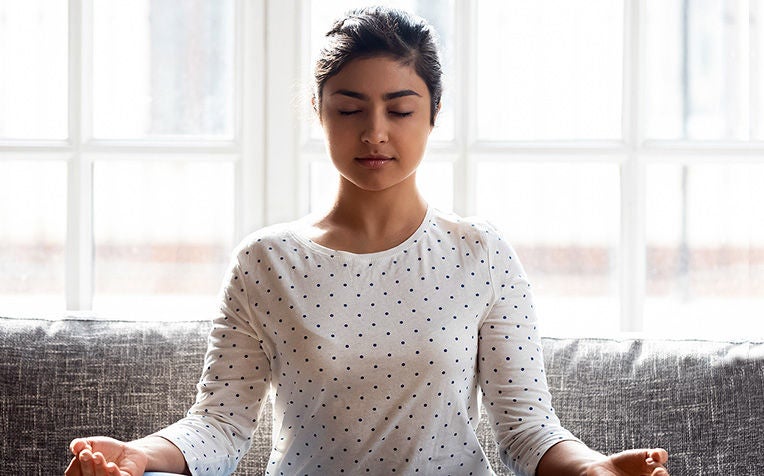
When anxiety strikes , calm yourself by slowing your rate of breathing and changing your breathing style.
Information and video provided courtesy of the Government of Western Australia - Centre for Clinical Interventions (CCI).
Breathing is a powerful determinant of physical state. When our breathing rate becomes elevated, a number of physiological changes begin to occur.
Perhaps you’ve noticed this yourself when you‘ve had a fright; you might suddenly gasp, feel a little breathless and a little light-headed, as well as feeling some tingling sensations around your body.
Believe it or not, the way we breathe is a major factor in producing these and other sensations that are noticeable when we are anxious.
Anxious breathing
We breathe in oxygen, which is used by the body, and we breathe out carbon dioxide. In order for the body to run efficiently, there needs to be a balance between oxygen and carbon dioxide, and this balance is maintained through how fast and how deeply we breathe. Of course, the body needs different amounts of oxygen depending on our level of activity. When we exercise, there is an increase in both oxygen and carbon dioxide; in relaxation there is a decrease in both oxygen and carbon dioxide. In both cases the balance is maintained.
When we are anxious though, this balance is disrupted. Essentially, we take in more oxygen than the body needs – in other words we overbreathe, or hyperventilate. When this imbalance is detected, the body responds with a number of chemical changes that produce symptoms such as dizziness, light-headedness, confusion, breathlessness, blurred vision, increase in heart rate to pump more blood around, numbness and tingling in the extremities, cold clammy hands and muscle stiffness.
The normal rate of breathing is 10-12 breaths per minute.
The calming technique
Gaining control over your breathing involves both slowing your rate of breathing and changing your breathing style. Use the calming technique by following these steps and you’ll be on your way to developing a better breathing habit.
Ensure that you are sitting on a comfortable chair or laying on a bed
Take a breath in for 4 seconds (through the nose if possible)
Hold the breath for 2 seconds
Release the breath taking 6 seconds (through the nose if possible)., then pause slightly before breathing in again.
Practise, practise, practise!
Breathing tips
When you first begin changing your breathing, it may be difficult to slow your breathing down to this rate. You may wish to try using a 3-in, 1-hold, 4-out breathing rate to start off with.
When you are doing your breathing exercises, make sure that you are using a stomach
breathing style rather than a chest breathing style. You can check this by placing one hand on your stomach and one hand on your chest. The hand on your stomach should rise when you breathe in.Try to practise at least once or twice a day at a time when you can relax, relatively free from distraction. This will help to develop a more relaxed breathing habit. The key to progress really is practise, so try to set aside some time each day.
By using the calming technique, you can slow your breathing down and reduce your general level of anxiety. With enough practice, it can even help to reduce your anxiety when you are in an anxious situation.
See the video below to learn about the Beginner's Breathing Technique
Ref: K21

















 Get it on Google Play
Get it on Google Play